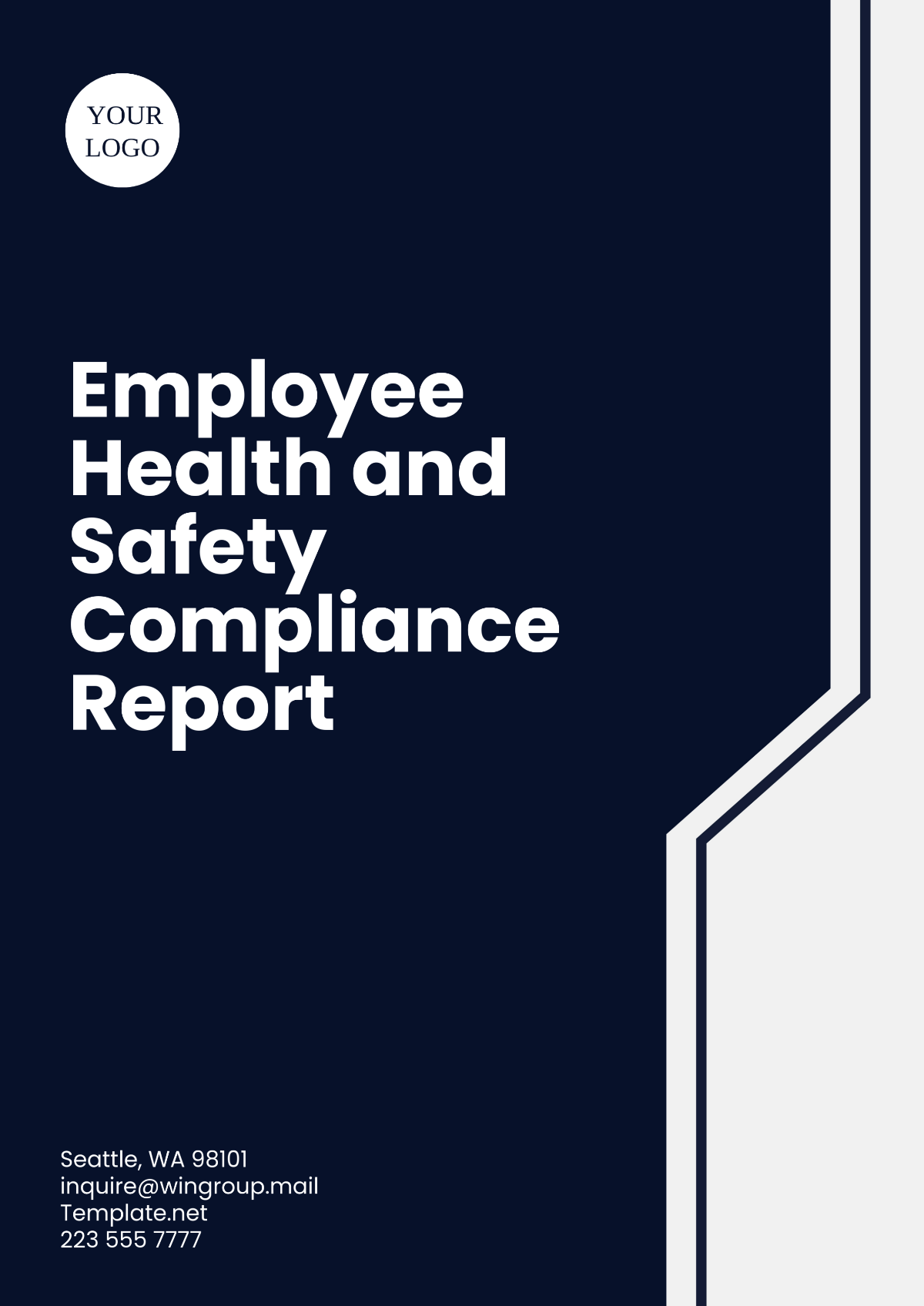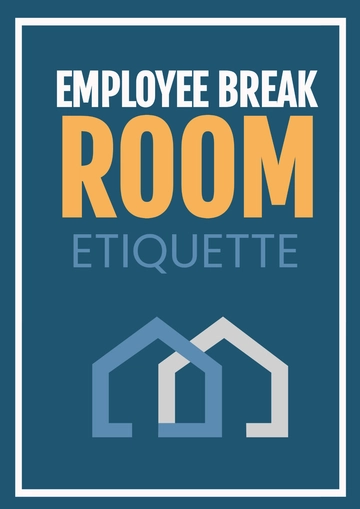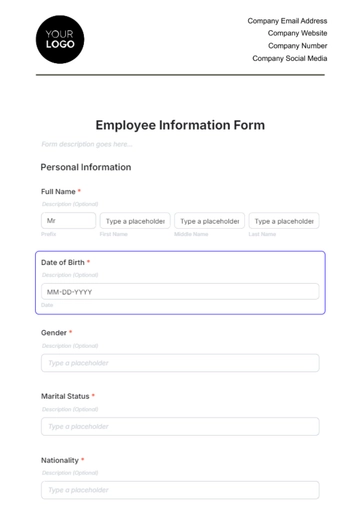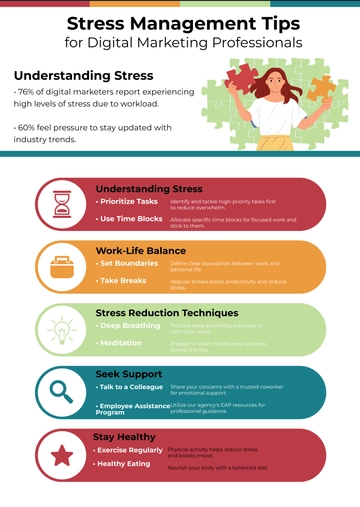Free Employee Health and Safety Compliance Report

Prepared by: [Your Name]
Company: [Your Company Name]
Date: March 1, 2053
1. Introduction
This report provides a detailed analysis of the current state of employee health and safety compliance within the company. It aims to evaluate the effectiveness of existing safety protocols, identify areas requiring improvement, and recommend strategies to enhance overall compliance with health and safety regulations. A safe and healthy work environment is critical not only for legal compliance but also for fostering employee well-being and productivity.
2. Objectives
The primary objectives of this report are to:
Assess the current compliance levels with applicable health and safety laws and regulations.
Identify potential hazards and risks within the workplace.
Evaluate the effectiveness of current health and safety training programs.
Propose actionable recommendations to improve health and safety compliance and mitigate risks.
3. Methodology
To ensure a comprehensive understanding of the health and safety landscape, this report employs a mixed-methods approach, which includes:
Document Reviews: Analysis of policy documents, incident reports, and compliance checklists.
Employee Surveys: Feedback collected to understand employee perceptions and awareness of health and safety practices.
Site Inspections: On-site evaluations to observe safety conditions and compliance in real-time.
Stakeholder Interviews: Discussions with managers, safety officers, and employees for qualitative insights.
4. Current Compliance Overview
4.1 Health and Safety Policies
The company has established robust health and safety policies aligned with national and local regulations. These policies address:
Emergency procedures and evacuation plans.
Workplace ergonomics to minimize physical strain.
Personal protective equipment (PPE) requirements.
Clear accountability structures for maintaining safety standards.
4.2 Training Programs
Regular training programs are conducted to ensure employees are well-informed about health and safety measures. These include:
Induction training for new hires.
Refresher courses on evolving safety regulations.
Specialized training for handling hazardous materials.
4.3 Incident Reporting and Analysis
The incident reporting system enables documentation of workplace accidents and near misses. Insights from incident trends are summarized below:
Year | Reported Incidents | Injuries | Near Misses |
|---|---|---|---|
2050 | 50 | 15 | 35 |
2051 | 45 | 12 | 33 |
2052 | 40 | 8 | 32 |
5. Assessment of Risks and Hazards
5.1 Workplace Hazard Identification
Routine inspections and audits have highlighted key risks, including:
Slips, trips, and falls due to wet floors or uneven surfaces.
Ergonomic risks from poorly designed workstations.
Exposure to hazardous materials, such as chemicals or airborne particles.
5.2 Risk Mitigation Measures
Existing risk mitigation measures include:
Safety signage to raise awareness about hazards.
Ergonomic furniture to prevent musculoskeletal issues.
Preventive maintenance to ensure equipment safety.
6. Key Metrics and Benchmarks
Metric | Current Status | Benchmark Goal |
|---|---|---|
Training participation rate | 85% | 100% |
Incident response time | 48 hours | 24 hours |
Audit frequency | Semi-annual | Quarterly |
7. Employee Engagement in Safety
7.1 Feedback Mechanisms
The company encourages open communication about safety concerns. However, there is room to improve participation in safety committees and feedback surveys.
7.2 Recognition Programs
Implementing recognition programs for employees who demonstrate exemplary safety practices can foster a proactive safety culture.
8. Recommendations
To strengthen health and safety compliance, the following strategies are proposed:
Enhance Training Programs:
Increase the frequency of safety training sessions.
Incorporate interactive elements such as simulations and real-life scenarios.
Improve Incident Reporting Systems:
Implement digital platforms for real-time incident reporting.
Establish a clear escalation matrix for timely action.
Foster Employee Involvement:
Establish safety committees with representatives from all departments.
Regularly solicit feedback on safety initiatives.
Invest in Advanced Safety Technology:
Deploy IoT-enabled sensors for real-time hazard detection.
Utilize analytics to predict and prevent potential incidents.
Conduct Regular Audits and Reviews:
Schedule quarterly health and safety audits.
Review compliance metrics regularly to track progress.
Promote a Safety Culture:
Introduce reward programs for compliance and proactive safety actions.
Regularly communicate the importance of safety through newsletters and workshops.
9. Conclusion
While the company has made significant strides in health and safety compliance, there is scope for improvement. Addressing the identified gaps and implementing the recommendations outlined in this report will strengthen compliance and create a safer, healthier work environment. These efforts will not only enhance employee well-being but also contribute to organizational efficiency and reputation.
- 100% Customizable, free editor
- Access 1 Million+ Templates, photo’s & graphics
- Download or share as a template
- Click and replace photos, graphics, text, backgrounds
- Resize, crop, AI write & more
- Access advanced editor
Ensure workplace safety with the Employee Health and Safety Compliance Report Template from Template.net. Fully editable and customizable, it simplifies documenting compliance standards. Tailor it effortlessly using our Ai Editor Tool for precision and ease. Save time while maintaining professionalism with this user-friendly, adaptable template, designed for comprehensive and accurate reporting. Get started today!
You may also like
- Employee Letter
- Employee ID Card
- Employee Checklist
- Employee Certificate
- Employee Report
- Employee Training Checklist
- Employee Agreement
- Employee Contract
- Employee Training Plan
- Employee Incident Report
- Employee Survey
- Employee of the Month Certificate
- Employee Development Plan
- Employee Action Plan
- Employee Roadmap
- Employee Poster
- Employee Form
- Employee Engagement Survey





























